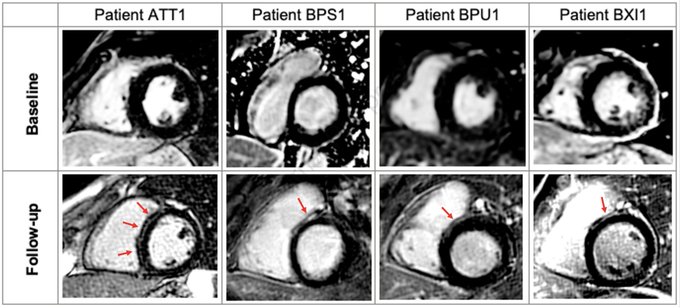Longitudinal Assessment of Structural Phenotype in Brugada Syndrome Using Cardiac Magnetic Resonance Imaging
Recently published in Heart Rhythm O2 October 17, 2022
With summary by author, Dr Julia C. Isbister
Brugada syndrome (BrS) has traditionally been considered a channelopathy but in recent years, paralleling advancement in imaging techniques, subtle structural changes have been observed in a number BrS cohorts around the world. Cardiac magnetic resonance (CMR)imaging has revealed that patients with BrS have increased right ventricular and right ventricular outflow tract volumes compared to health controls. Focal fibrosis evidence by late gadolinium enhancement (LGE) has also been reported. Indeed, it has been postulated that BrS may be a focal cardiomyopathy rather than a pure ion channel disease.
This pilot study (n=18) represents the first time patients with BrS have been studied longitudinally with CMR and revealed that the myocardial changes can develop or progress over time. Most strikingly 22% of patients developed mid-wall LGE, typically associated with dilated cardiomyopathy, in the absence of other identifiable causes.
This work is hypothesis generating and we hope that the interesting results will prompt other groups around the world to review their patients with BrS to determine if progressive structural changes are observed in other cohorts. Ultimately, correlation of any progression of structural change with arrhythmic events and patient outcomes will be needed to determine the clinical implications of these observations and determine if serial structural assessment may aid risk stratification in BrS.
Isbister, J.C. et al, 2022, ‘Longitudinal Assessment of Structural Phenotype in Brugada Syndrome Using Cardiac Magnetic Resonance Imaging’ Heart Rhythm O2
DOI: https://doi.org/10.1016/j.hroo.2022.10.004

